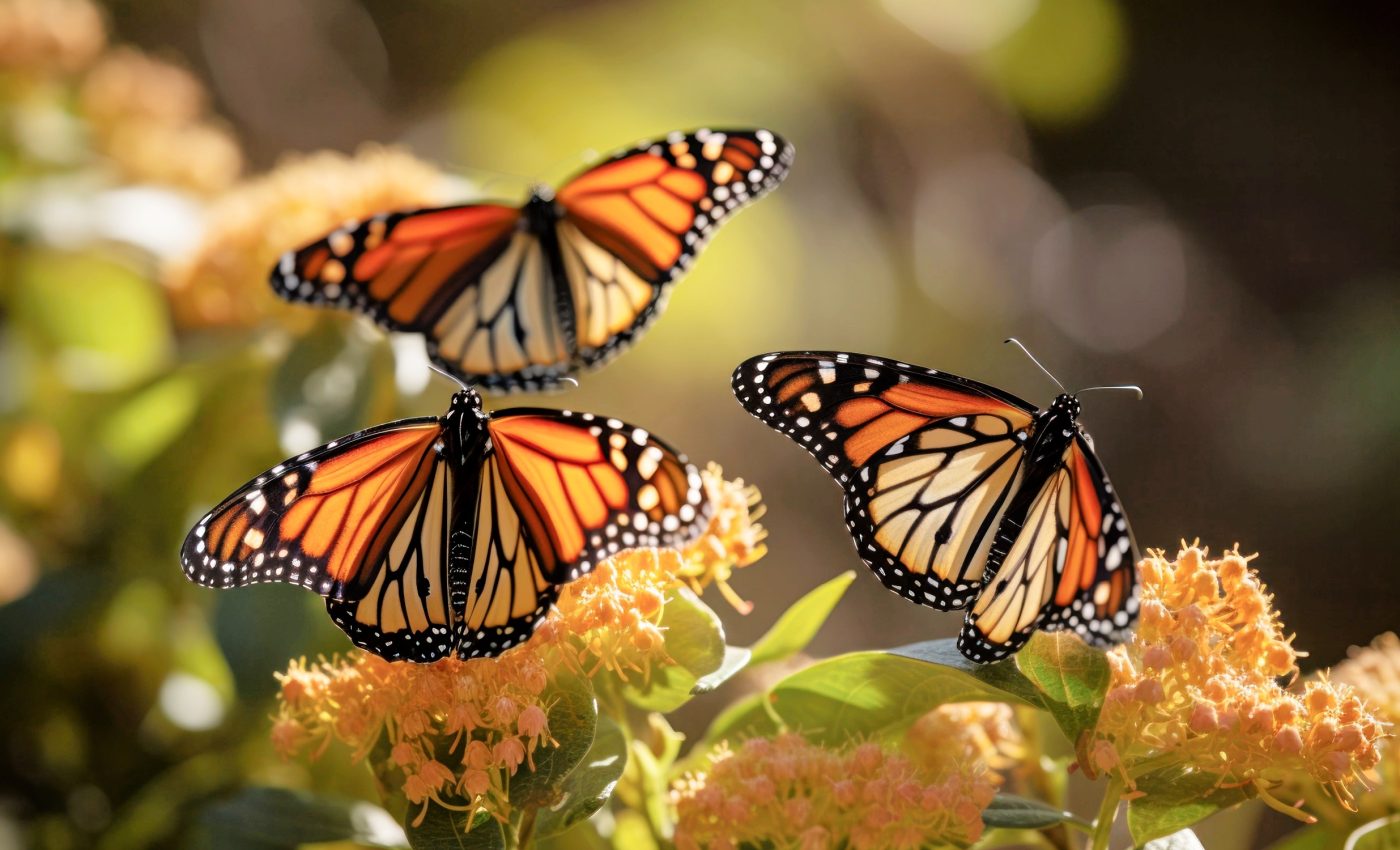
Monarch butterflies are delaying their migration in a warmer climate
Monarch butterflies are among the most studied insects in the world due to their impressive seasonal journeys across North America. Yet, their populations face mounting challenges as climate change alters the landscapes they rely on.
Harlan Radcliff is an amateur butterfly enthusiast. For over 17 years, he dedicated his lunch breaks to observing monarchs at Camp Dodge, a military installation in Iowa.
What started as a personal passion turned into an invaluable scientific record. His meticulous notes allowed researchers to analyze how climate variations are affecting monarch migration patterns in the 21st century.
Long-term record of monarch activity
Between April and November, from 2003 to 2019, Radcliff carefully recorded the dates, times, locations, and numbers of the butterflies he spotted.
He had no idea at the time that his efforts would one day shape a significant scientific study. His dataset provided a rare long-term record of monarch activity in the heart of their summer breeding range.
Professor Diane Debinski, head of Montana State University’s Department of Ecology, led a research team that used Radcliff’s observations to study monarch migration.
Funded by the U.S. Department of Defense, the study was part of a broader effort to understand how climate change is affecting butterfly species on military lands.
Climate change and monarch migration
Monarch butterflies are unique in their migration patterns. Eastern monarchs travel between Mexico and the U.S., spending summers east of the Rocky Mountains. Western monarchs winter in California and migrate west of the Rockies during the summer.
The study aimed to examine the phenology of Camp Dodge’s monarchs. This involved looking at the timing of key events in their life cycle, such as arrival, departure, and peak abundance.
Changes in these timings can affect their survival, reproductive success, and overall population health.
“We wanted to look at phenology of butterflies and test whether it was shifting, and if it was, to ask how that might affect the viability of the populations over the long term,” explained Professor Debinski.
The team also analyzed the phenology of milkweed, the monarchs’ primary host plant. Monarch caterpillars rely on milkweed for survival, making it essential to understand whether its growing season was shifting in sync with butterfly migration.
Testing phenological shifts in monarchs
The researchers conducted fieldwork in 2020 to test whether monarch arrival times had changed over the years.
They placed monarch eggs on milkweed plants at different intervals – some two weeks earlier than historical records, some at the expected time, and others two weeks later. This approach helped them determine whether changes in migration timing had consequences for the butterflies’ development.
The initial hypothesis was that monarchs would arrive earlier due to climate change, mirroring patterns observed in other species. However, the data revealed something unexpected.
The timing of monarch arrival remained consistent from 2003 to 2019, but their fall departure was delayed. By 2019, monarchs were staying at Camp Dodge about nine days longer than they had in 2003.
Risks of a longer fall season
The shift in fall departure raised important questions about the effects of climate change on monarchs. Interestingly, milkweed also showed a similar pattern, blooming later into the season.
“What we saw was that milkweed herbarium specimens were collected later over time, indicating that they were blooming longer over time, and monarchs were in the field as adults longer over time, which means that the fall season was actually indicating a change,” noted Professor Debinski.
While a longer fall season might seem beneficial, it carries potential risks. Butterflies staying in the field longer could be exposed to more predators and parasites.
Additionally, a longer growing season might create a “development trap,” where monarchs begin a phase of their life cycle too late to complete it.
Climate shifts may help or harm monarchs
A development trap occurs when environmental changes encourage butterflies to lay eggs late in the season, but those eggs fail to develop into adults before winter arrives. This could lead to increased mortality rates, reducing overall population numbers.
The field experiment confirmed that a shift in monarch timing could have costly effects. The researchers observed that early-season larval survival was highest when egg hatching matched historical monarch arrivals.
However, when eggs were placed on milkweed two weeks earlier than usual, survival rates dropped.
These findings highlight the delicate balance monarchs must maintain with their environment. Even small changes in climate and plant growth cycles can disrupt their lifecycle, potentially leading to population declines.
Tracking monarch population changes
Although Radcliff has since passed away, his careful documentation provided an essential foundation for this research.
His records allowed scientists to track monarch population changes at Camp Dodge over nearly two decades. The study confirmed that monarch populations declined between 2003 and 2019, reflecting broader trends observed by the U.S. Fish and Wildlife Service.
“Discussions about phenology often exclude migratory butterflies, because they experience climates in multiple places,” said Professor Debinski.
“Our research showed that even migratory species can show shifts in phenology. The more information we have about phenology, population sizes and population growth rates, the better we will be able to conserve monarch butterflies and many other species of conservation concern.”
This research serves as a reminder of the importance of long-term ecological data. Without Radcliff’s commitment to documenting monarchs year after year, scientists might have missed these critical trends.
As climate change continues to shape ecosystems, studies like this one will help conservationists understand how best to protect the iconic monarch butterflies for future generations.
The study is published in the Journal of Animal Ecology.
—–
Like what you read? Subscribe to our newsletter for engaging articles, exclusive content, and the latest updates.
Check us out on EarthSnap, a free app brought to you by Eric Ralls and Earth.com.
—–













